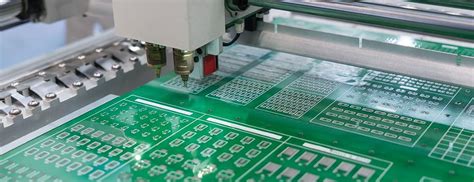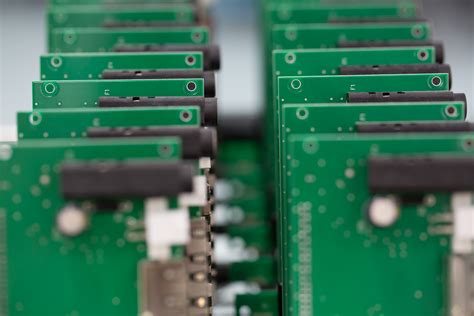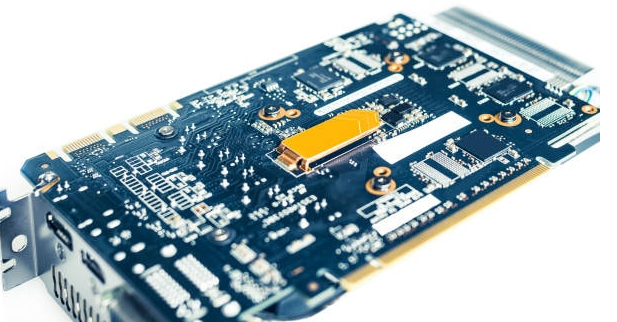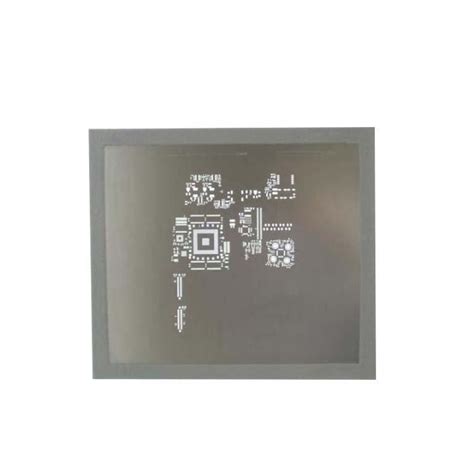Flex pcb pressure sensor
Advantages Of Flex PCB Pressure Sensors In Modern Electronics
Flex PCB pressure sensors have emerged as a pivotal component in the realm of modern electronics, offering a multitude of advantages that cater to the evolving demands of contemporary technology. These sensors, characterized by their flexible printed circuit board (PCB) design, are increasingly being integrated into a wide array of applications, from consumer electronics to industrial machinery, due to their unique properties and benefits.
One of the primary advantages of flex PCB pressure sensors is their inherent flexibility.
Unlike traditional rigid sensors, flex PCB sensors can be bent, twisted, and conformed to various shapes and surfaces. This adaptability allows for seamless integration into devices with unconventional or compact form factors, such as wearable technology and medical devices. The ability to conform to different surfaces without compromising functionality is particularly beneficial in applications where space is limited or where the sensor needs to be embedded in a non-linear structure.
In addition to their flexibility, these sensors are known for their lightweight nature.
The use of thin, flexible materials in their construction reduces the overall weight of the sensor, making them ideal for applications where weight is a critical factor. For instance, in the aerospace and automotive industries, where every gram counts, the lightweight nature of flex PCB pressure sensors contributes to improved fuel efficiency and performance.
Moreover, flex PCB pressure sensors offer enhanced durability and reliability.
The materials used in their construction are often resistant to environmental stressors such as temperature fluctuations, humidity, and mechanical vibrations. This resilience ensures that the sensors maintain their performance over extended periods, even in harsh conditions. Consequently, they are well-suited for use in industrial settings where they may be exposed to challenging environments.
Another significant advantage of flex PCB pressure sensors is their high level of precision and sensitivity.
These sensors are capable of detecting minute changes in pressure, making them invaluable in applications that require accurate and reliable measurements. For example, in the medical field, they are used in devices that monitor vital signs, where precise pressure readings are crucial for patient care. Similarly, in consumer electronics, they enable the development of touch-sensitive interfaces that respond accurately to user inputs.
Furthermore, the manufacturing process of flex PCB pressure sensors is conducive to cost-effective production.
The use of flexible substrates and advanced fabrication techniques allows for the production of sensors at a lower cost compared to their rigid counterparts. This cost efficiency is particularly advantageous in high-volume applications, where reducing production costs can lead to significant savings.
In conclusion, the advantages of flex PCB pressure sensors in modern electronics are manifold. Their flexibility, lightweight nature, durability, precision, and cost-effectiveness make them an attractive choice for a wide range of applications. As technology continues to advance, the demand for sensors that can adapt to new challenges and requirements is likely to grow. Flex PCB pressure sensors, with their unique properties, are well-positioned to meet this demand, playing a crucial role in the development of innovative electronic solutions across various industries.

Design Considerations For Flex PCB Pressure Sensors
When designing flex PCB pressure sensors, several critical considerations must be taken into account to ensure optimal performance and reliability. These sensors, known for their flexibility and adaptability, are increasingly used in various applications, from medical devices to consumer electronics. The unique properties of flex PCBs, such as their ability to conform to complex shapes and withstand dynamic environments, make them ideal for pressure sensing applications. However, the design process involves a careful balance of material selection, sensor architecture, and manufacturing techniques.
To begin with, material selection is paramount in the design of flex PCB pressure sensors.
The choice of substrate material significantly impacts the sensor’s flexibility, durability, and sensitivity. Polyimide is a popular choice due to its excellent thermal stability and mechanical properties. It allows the sensor to maintain performance under varying environmental conditions. Additionally, the conductive materials used for the sensor’s circuitry, such as copper or silver, must be chosen for their conductivity and compatibility with the substrate. The thickness of these materials also plays a crucial role, as it affects the sensor’s flexibility and overall performance.
Transitioning to sensor architecture, the design must incorporate features that enhance sensitivity and accuracy.
The layout of the conductive traces and the placement of the sensing elements are critical factors. A well-designed pattern can improve the sensor’s ability to detect minute pressure changes. Moreover, the integration of additional components, such as resistors or capacitors, can help in signal conditioning and noise reduction, thereby enhancing the sensor’s performance. The architecture should also consider the sensor’s intended application, as different use cases may require specific design adaptations.
Furthermore, the manufacturing process is a vital consideration in the design of flex PCB pressure sensors.
The fabrication techniques must ensure precision and repeatability to produce sensors that meet stringent quality standards. Techniques such as photolithography and etching are commonly used to create the intricate patterns required for these sensors. Additionally, the lamination process must be carefully controlled to prevent defects that could compromise the sensor’s functionality. The choice of adhesives and bonding methods is also crucial, as they must provide strong adhesion without affecting the sensor’s flexibility.
In addition to these technical considerations, environmental factors must also be addressed during the design phase.
Flex PCB pressure sensors are often exposed to harsh conditions, such as extreme temperatures, humidity, and mechanical stress. Therefore, the design must incorporate protective measures, such as encapsulation or conformal coatings, to shield the sensor from these elements. These protective layers must be carefully selected to ensure they do not interfere with the sensor’s performance or flexibility.
Finally, it is essential to consider the integration of the flex PCB pressure sensor into the final product.
The sensor’s design should facilitate easy integration with other components and systems. This may involve designing custom connectors or interfaces that allow seamless communication with other electronic devices. Additionally, the sensor’s form factor should be optimized to fit within the spatial constraints of the application.
In conclusion, the design of flex PCB pressure sensors involves a complex interplay of material selection, sensor architecture, manufacturing techniques, and environmental considerations. By carefully addressing each of these aspects, designers can create sensors that offer high performance, reliability, and adaptability for a wide range of applications.

Applications Of Flex PCB Pressure Sensors In Wearable Technology
Flex PCB pressure sensors have emerged as a pivotal component in the rapidly evolving field of wearable technology. These sensors, characterized by their flexibility, lightweight nature, and adaptability, are increasingly being integrated into a variety of wearable devices, offering innovative solutions across multiple applications. As the demand for more sophisticated and user-friendly wearables grows, the role of flex PCB pressure sensors becomes ever more significant.
One of the primary applications of flex PCB pressure sensors in wearable technology is in the realm of health monitoring.
These sensors are capable of detecting minute changes in pressure, making them ideal for tracking vital signs such as heart rate, blood pressure, and respiratory rate. For instance, when embedded in smartwatches or fitness bands, they can provide continuous, real-time monitoring of a user’s cardiovascular health. This capability not only aids in personal health management but also offers valuable data for medical professionals, facilitating early diagnosis and intervention in potential health issues.
Moreover, flex PCB pressure sensors are instrumental in enhancing the functionality of smart clothing.
By integrating these sensors into fabrics, manufacturers can create garments that monitor body posture, movement, and muscle activity. This application is particularly beneficial for athletes and fitness enthusiasts, as it allows for the analysis of performance metrics and the optimization of training regimens. Additionally, such smart clothing can assist in injury prevention by alerting users to improper movements or excessive strain on specific body parts.
In addition to health and fitness, flex PCB pressure sensors are finding applications in the burgeoning field of augmented reality (AR) and virtual reality (VR).
Wearable devices equipped with these sensors can provide haptic feedback, enhancing the immersive experience of AR and VR environments. For example, gloves embedded with pressure sensors can simulate the sensation of touch, allowing users to interact with virtual objects in a more realistic manner. This application not only enriches entertainment experiences but also holds potential for training and educational purposes, where realistic simulations can provide hands-on learning opportunities.
Furthermore, the integration of flex PCB pressure sensors in wearable technology extends to the realm of assistive devices.
For individuals with disabilities, these sensors can be incorporated into prosthetics or orthotics to improve functionality and comfort. By providing feedback on pressure distribution and fit, they enable more precise adjustments, enhancing the wearer’s mobility and overall quality of life. This application underscores the potential of flex PCB pressure sensors to contribute to more inclusive and accessible technology solutions.
As the wearable technology market continues to expand, the versatility and adaptability of flex PCB pressure sensors will likely lead to even more innovative applications.
Their ability to conform to various shapes and surfaces, combined with their sensitivity and accuracy, makes them an ideal choice for developers seeking to push the boundaries of what wearables can achieve. In conclusion, the integration of flex PCB pressure sensors into wearable technology not only enhances existing functionalities but also opens up new possibilities for innovation, ultimately contributing to a future where technology seamlessly integrates into our daily lives, improving health, performance, and accessibility.

Innovations In Flex PCB Pressure Sensor Manufacturing Techniques
The field of flexible printed circuit board (PCB) pressure sensors has witnessed remarkable advancements in recent years, driven by the demand for more adaptable and efficient sensing technologies. These innovations have been pivotal in enhancing the performance, reliability, and application range of flex PCB pressure sensors. As industries increasingly seek solutions that offer both flexibility and precision, the manufacturing techniques of these sensors have evolved to meet these needs.
One of the most significant innovations in the manufacturing of flex PCB pressure sensors is the integration of advanced materials.
The use of conductive inks and polymers has allowed for the creation of sensors that are not only flexible but also highly sensitive to pressure changes. These materials enable the sensors to maintain their structural integrity while being bent or stretched, which is crucial for applications in wearable technology and other dynamic environments. Moreover, the incorporation of nanomaterials, such as graphene and carbon nanotubes, has further enhanced the sensitivity and conductivity of these sensors, opening up new possibilities for their use in various sectors.
In addition to material advancements, the manufacturing processes themselves have undergone significant improvements.
Techniques such as screen printing and inkjet printing have been refined to allow for more precise deposition of conductive materials onto flexible substrates. These methods offer the advantage of being cost-effective and scalable, making them suitable for mass production. Furthermore, the development of roll-to-roll processing has revolutionized the production of flex PCB pressure sensors by enabling continuous manufacturing, which significantly reduces production time and costs. This method also allows for the production of large-area sensors, which are essential for applications in fields such as robotics and healthcare.
Another noteworthy innovation is the miniaturization of flex PCB pressure sensors.
As electronic devices become increasingly compact, there is a growing need for sensors that can fit into smaller spaces without compromising performance. Advances in microfabrication techniques have made it possible to produce sensors with reduced dimensions while maintaining high levels of accuracy and sensitivity. This miniaturization has expanded the potential applications of flex PCB pressure sensors, particularly in the medical field, where they can be used in minimally invasive devices and implants.
Moreover, the integration of wireless communication capabilities into flex PCB pressure sensors represents a significant leap forward.
By incorporating technologies such as Bluetooth and NFC, these sensors can transmit data in real-time to connected devices, facilitating remote monitoring and data analysis. This capability is particularly beneficial in applications where wired connections are impractical or undesirable, such as in wearable health monitors or industrial equipment monitoring systems.
In conclusion, the innovations in flex PCB pressure sensor manufacturing techniques have been instrumental in advancing the capabilities and applications of these sensors. Through the use of advanced materials, refined manufacturing processes, miniaturization, and wireless integration, flex PCB pressure sensors have become more versatile and efficient. As these technologies continue to evolve, it is expected that they will play an increasingly important role in a wide range of industries, from healthcare and consumer electronics to automotive and industrial automation. The ongoing research and development in this field promise to yield even more sophisticated and adaptable sensing solutions in the future, further solidifying the importance of flex PCB pressure sensors in modern technology.






